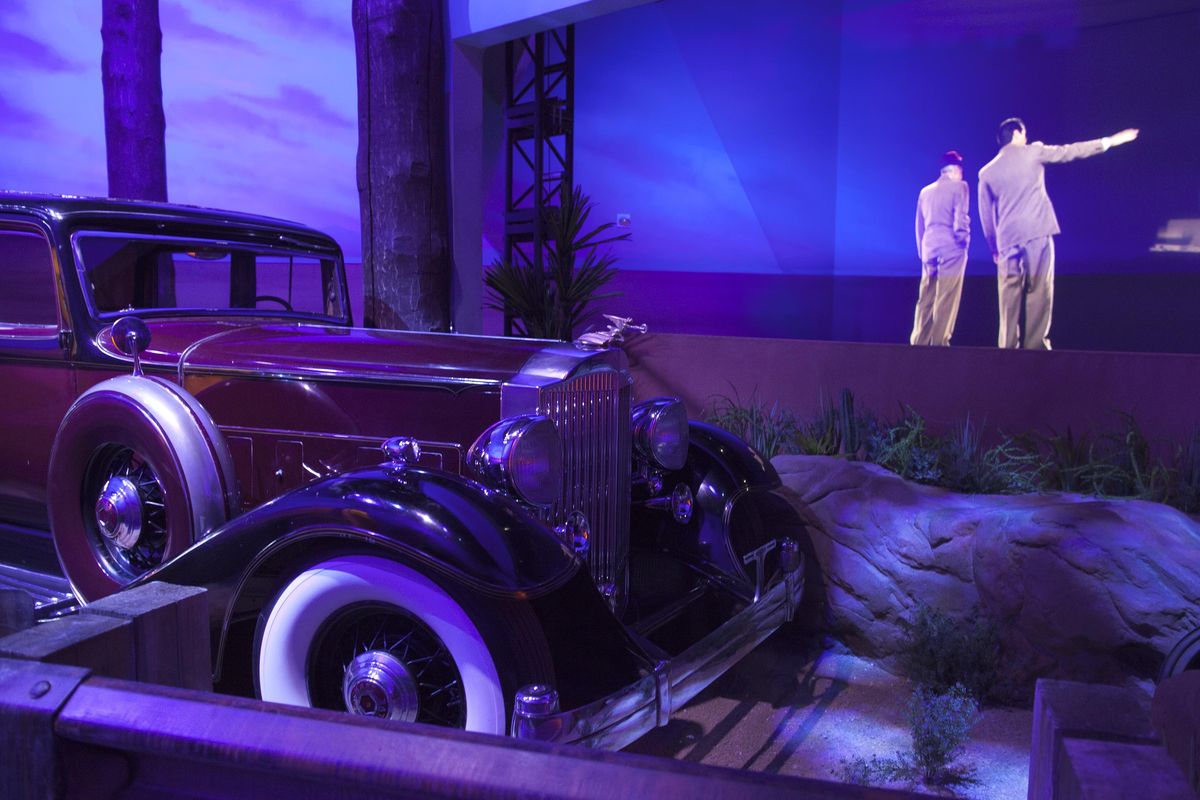New attractions help celebrate Las Vegas’ organized-crime roots

LAS VEGAS – Speakeasies, bootleggers, gun-wielding crime bosses and tough-guy accents pay homage to Las Vegas’ mob roots in a pair of new attractions showcasing Sin City’s criminal history.
An interactive attraction featuring gangster memorabilia and commentary from film mobsters James Caan, Mickey Rourke and Frank Vincent opened last month on the Las Vegas Strip.
And Mayor Oscar Goodman, a former mob defense lawyer, plans to launch his Las Vegas Museum of Organized Crime and Law Enforcement later this year.
For Las Vegas, the attractions represent an unprecedented embrace of its infamous founders.
“What differentiates us from any other city is our history,” Goodman says. “This is the story of America.”
The desert oasis made famous by scantily clad showgirls, ubiquitous slot machines and 24-hour happy hours has long celebrated its reputation as a haven of vice, but its relationship with the mob has taken a few hits in recent years.
The city that once proudly boasted of its ties to organized crime – Goodman played himself in the 1995 mob movie “Casino” – has instead promoted its family-friendly restaurants and Broadway shows for the past decade.
No more.
The Tropicana casino and hotel, a one-time hangout for organized crime now more known for its bargain-counter room rates, celebrated the opening of its “Mob Experience” attraction with a red carpet party attended by “Baywatch” siren Pamela Anderson and comedian Rita Rudner – as well as a handful of mob heirs, including the son of Tony “The Ant” Spilotro, the inspiration for the bloodthirsty Joe Pesci character in “Casino.”
The sprawling casino attraction features the diary of mobster Meyer Lansky, Spilotro’s gun and family photos and home movies from other infamous criminals. Visitors are greeted by life-size holograms of chatty gangsters and a chance to get “made.”
The publicly funded mob museum, meanwhile, is slated to open in December at a downtown Las Vegas courthouse where a detailed mob hearing that helped expose organized crime to ordinary Americans was held in 1950.
The $42 million museum started as an effort to save one of Las Vegas’ few historic buildings. It’s amassed a wide collection of gangster artifacts, including the wall from Chicago’s St. Valentine’s Day massacre, the only gun recovered at the mass shooting and the barber chair where hit man Albert Anastasia’s life came to an end in a 1957 New York murder.
“This isn’t some lampoon,” Goodman said. “It’s not a gimmick. This is going to be a real museum.”
The museum will highlight money-laundering schemes, mob violence and the role organized crime played in Las Vegas and other cities.
Both attractions expect to lure hundreds of thousands of visitors each year, driven, at least in part, by the nation’s unquenched fascination with the silver-screen mob bosses of “Goodfellas” and “The Godfather.”
“There is a certain excitement to think people who had done illegal things and got away with it were in charge here,” says Alan Balboni, a Nevada historian.
Neither attraction has sidestepped controversy.
The Tropicana’s “Mob Experience” was sued by the daughter of notorious gangster Sam Giancana over an alleged breach of contract involving the purchase of Giancana’s furniture.
Critics have also slammed the attraction for being too deferential to the family members of the gangsters. The exhibition glosses over the mob bosses’ violent histories while praising them as handsome fathers.
“Why are any of these brutal killers being honored? This is nothing but gross sensationalism,” says William Donati, an English professor at the University of Nevada, Las Vegas, and the author of “Lucky Luciano: The Rise and Fall of a Mob Boss.”
“This is the image of Las Vegas that we want to portray?” Donati asks. “What are they going to do next, have a show honoring the drug cartels of Mexico?”
To appease critics and burnish its academic credentials, the mob museum brought in historians, law enforcement officials and acclaimed museum leaders to help build its collection.
Ellen Knowlton, a former FBI agent based in Las Vegas, says she initially worried the project would romanticize mob culture after Goodman asked her to head the not-for-profit museum.
She focused on the consequences of crime and persuaded collectors and federal investigators to provide photographs, transcripts of wiretaps and other materials from various mob investigations.
“If you thought organized crime was a glamorous lifestyle when you walked into the museum, you won’t feel that way when you walk out,” Knowlton says.
Like many of America’s colorful cities, Las Vegas boasts a rich history of hustlers, gangsters and hoodlums.
The city’s backroom deals and money laundering schemes gained worldwide notoriety because of criminal legends such as Benjamin “Bugsy” Siegel, who ran the Flamingo hotel in the 1940s and named it after his mistress. The racketeer was implicated in at least 30 murders, according to the FBI.
In later years, Frank “Lefty” Rosenthal ran the Chicago mob-owned Stardust, Fremont, Hacienda and Marina casinos.
Unlike in other cities, where mob bosses fought for territory, Las Vegas was deemed an open playground for gangsters of all nationalities.
“This was the golden goose,” says Michael Green, a historian at the Community College of Southern Nevada who is working with the mob museum. “Las Vegas was a young enough city not to be bound by old elites and old rules.”
Nevada’s tightening regulations and increasingly corporate culture began to turn off mobsters in the 1970s, allowing Las Vegas to become the corporate-run tourist mecca it is today.
There are still those who long for the past. Longtime casino workers frequently reminisce about the days when mob bosses delivered flowing tips and safe streets.
Asked about the mob’s decline, Goodman jests, “The real mob disappeared a long time ago. That’s the reason why I became mayor. I had no more clients.”